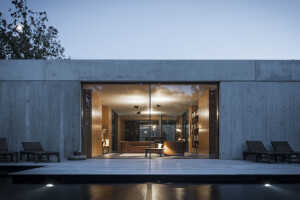The Botanic Gardens and Parks Authority (BGPA) support the premise that children who positively experience the natural environment will have increased environmental understanding and engagement in environmental conservation.
The Authority’s vision for Naturescape is to provide a highly interactive and engaging nature basedenvironmental experience for the whole community that has a unique sense of place and, through fun, discovery, immersion and connection with nature is a catalyst for positive environmental interaction and learning.
Naturescape is a unique, innovative, interactive and accessible 6 Ha naturalistic landscape which forms part of the $10M Environmental Education Facility within Western Australia’s Kings Park and Botanic Garden. Stage 1 was completed in 2011 and Stage 2 was completed in 2017.Naturescape invites all members of society to immerse themselves inanaturalistic environment through both formal and informalnature-based activity,from school-based environmental programmes to informal water play, cubby building, tree climbing and foraging. While Naturescape is designed to be highly responsive to the existing A Class reserve and bushland arboretum in which it is set, unique sensory and interactive landscapes have been created including thickets, wetlands andcreeks offering a diverse range of experiences themed on iconic Western Australian habitats.
While local and international examples of naturalistic playscapes were examined, no examples of experiential, immersive and environmentally grounded ‘naturescapes’ existed that would meet BGPA’s vision. Naturescape’s unique design and ongoing management is therefore grounded in research, science andcommunity and stakeholderconsultation.A series of workshops with community representatives, Kings Park staff and volunteers, funding partners and stakeholders informed the unique brief developed by PLAN E in association with the Client.Further input was obtained from the University of Western Australia Centre for Built Environment with regard child development and learning,and the Western Australian Department of Health, who’s involvement continues today through the testing of, and the setting of standards for naturalistic, nature based interactive water play facilities. Previous to Naturescape no water quality, testing or management models existed for facilities of this type.
In light of the unique nature of the project, and to preserve thesignificant and ancientbushland environment, including rare and endangered species, the understated and low-keylandscape design was founded in the existing natural attributes of the site and in particular existing habitats and landform.A recreated “natural”creek and wetland system, designed for wading and water play, forms the spine of Naturescape while introduced interactive elements, including two dramatic aerial teaching structures, shelters, viewing towers and seating pods were specifically designed to present as stylised and deliberate intrusions into the natural landscapeinspired by the shape of seeds, leaves and nests.
Many of these elements have been designed to encourage alternative perceptions of nature, in order to stimulategreater thought and awareness of our environment.Plan E’s materials palette, comprising a range of sympathetic natural materials from throughout Western Australia, including 150 tonnes of Ironstone brought 1400kilometres from Tom Price, link the project with the iconic landscapes of WA and the north west in particular.These innovative design solutionsfully respect and protect the existing fragile landscape while offering the community hands-on immersion experiences. The design is robust enough to withstand the significant pressures presented by high visitation to Kings Park while also being safe, accessible and highly sustainable over time.
PlanE workedclosely with BGPA to ensure the most environmentally responsive design and management principles were applied to the project, ensuring significant flora and fauna, natural systems and hydraulics of the site were mapped andpreserved, and all significant trees in the Bushland Arboretum planted in the 1960’s were conserved. With sustainability at the core of the project, best practice is displayed in water management, energy efficiency and public safety.
In particular all water to the extensive naturalised lakes, streams and wetland habitats is managed through KPBG’s irrigation system, in a closed loop system that returns all water to the Park’s main irrigation holding ponds for reuse. Rainwater runoff from the lake and stream catchments is collected for return to the holding ponds via the same system and stormwater from parking areas and access roads is captured for use within the Park.As part of the sustainability strategy the landscape has also been designed tofacilitatecontinuous evolution asClient and community needs and expectationschange over time and as vegetation matures.
Naturescape’s guiding philosophy of reconnecting people with nature has now been fully realised with the completion of Stage 2 of this seminal project.






































